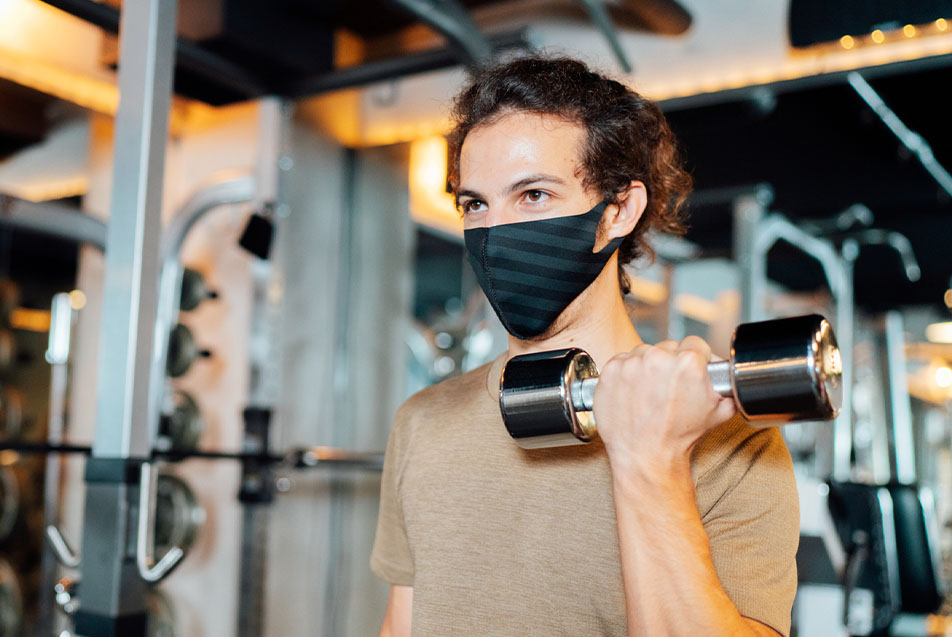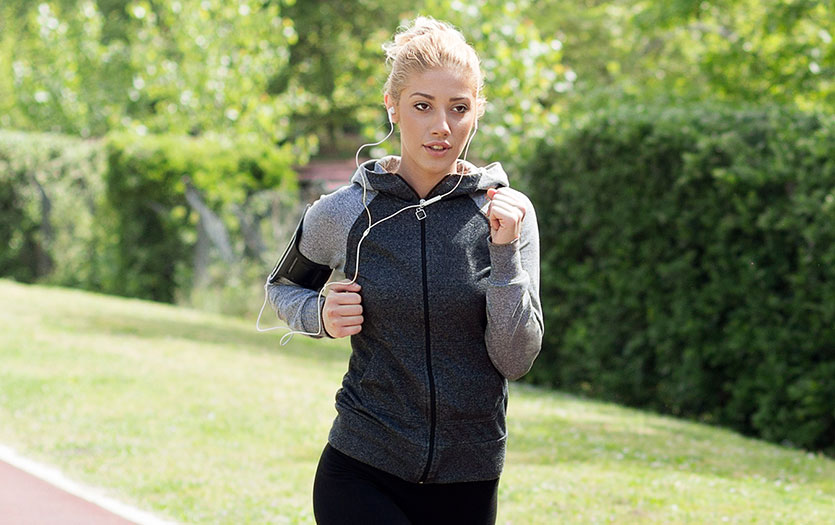
This post was written by Mackenzie Clark, MS, LAT, ATC, CSCS and Rachael Bouwmeester, MS, LAT, ATC, CSCS, Parkview Sports Medicine.
With the current rise in COVID-19 cases across the area, it’s become even more important to wear a mask when you’re away from home, including when working out. Although it may feel uncomfortable, if you give your body time to adapt to exercising with a face covering on, you can do it safely while still enjoying being active and protecting yourself as well as others from COVID-19.
Why do I need to wear a mask while exercising?
When you are exercising around other people, especially indoors where air circulation is less likely to dissipate the virus, wearing a mask can reduce the risk of infecting someone nearby. Even if you don’t have symptoms, you may be an unwitting carrier of the disease, and the use of a mask helps prevent the spread of respiratory droplets that may be infectious to others.
Is it safe to exercise while wearing a mask?
Covering your face during exercise increases the risk of potential breathing restriction and discomfort and requires your body to adapt. However, despite these constraints, masks themselves do not cause low oxygen levels. Remember, when you start a new workout routine or make changes to your exercise schedule, it takes time for your body to adapt to the new movements before it becomes natural. Adding a mask as part of your “workout gear” is very similar and is safe when your body can gradually adapt to the reduced airflow.
How can I start wearing a mask safely?
If you are exercising with a face mask on, it’s best to increase the intensity from one workout to the next slowly, so you’re aware of how your body reacts to something covering your mouth and nose. Even with workout routines you are used to, you may feel lightheaded or notice a more rapid heart rate. While wearing a mask, you can anticipate that your heart rate will be higher at the same relative intensity as it was before wearing the mask, likely about 8-10 beats higher per minute. Breathing rates can also double or even quadruple. You may want to wear a heart rate monitor or a fitness watch to ensure you remain within your target heart rate zone.
As with all things related to exercise, people will respond to wearing a mask individually and should monitor their symptoms to ensure their safety. The human body is continually adapting to the environment around it and will do so when it isn’t suddenly “shocked” with something new, but rather gradually introduced to it.
What are some signs that my mask is too restrictive?
The most common signs that your mask may be too restrictive are lightheadedness and dizziness. Wearing a face mask while exercising can cause you to feel overheated more quickly as well. If you’re not feeling well while exercising with a mask, stop the exercise, socially distance yourself if possible and remove your face covering.
Is there a certain type of mask I should wear?
Try to avoid wearing paper surgical masks while working out. These masks become wet faster than a cloth mask or a moisture-wicking mask. You can also try wearing a buff, which is a garment worn from your nose to your neck. However, individuals should exercise caution when choosing this type of face covering. According to Jason Row, MD, PPG – Family Medicine and Pediatrics, the buff is not as effective as other masks and, if worn, it should be layered a few times. A good rule of thumb: if you can feel your breath come through the fabric, it is too thin and not protective.
What are some ways I can exercise safely while wearing a mask?
Wearing a mask while exercising can significantly increase your heart rate, especially while doing high-intensity training. Because of that, try to avoid exercises like high-intensity interval training (HIIT), heavy weight lifting, plyometrics, sprinting and intense cardio exercises.
Decreasing the amount of time you are working out and reducing the intensity, repetitions or weight load are other ways you can modify your workout as you begin exercising with a mask.
You may want to opt for low-impact activities like walking or weight training with lighter weights. You could also opt for exercising outdoors, like hiking or trail walking if weather permits.



